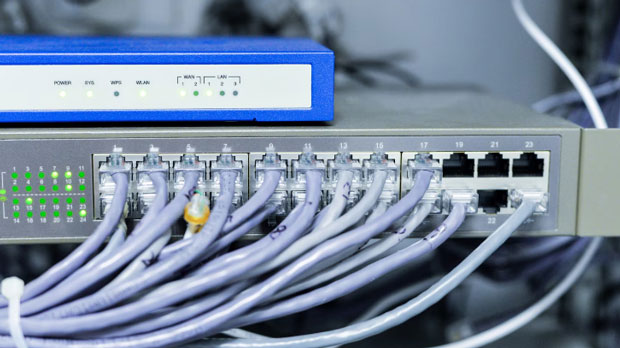In the rapidly growing world of internet security, HTTPS certificates play a vital role in ensuring secure communication between clients and servers. Meanwhile, request handling capabilities are crucial for efficiently processing a large volume of internet traffic. In the context of proxy services, providers like PYPROXY and Luminati Proxy are often compared for their performance, security features, and ability to manage HTTPS certificates and requests. This article will delve into the differences between these two services, analyzing their strengths, weaknesses, and how they handle requests in terms of performance, security, and overall efficiency. 1. HTTPS Certificates and Their Role in Proxy ServicesIn the world of proxy services, HTTPS certificates serve as the backbone of secure communication. When clients access websites through a proxy, it is essential for the proxy server to present valid HTTPS certificates to ensure that the connection remains encrypted and protected from potential attacks. An HTTPS certificate verifies the identity of a website, preventing issues such as man-in-the-middle attacks and data theft. When evaluating proxy services like PyProxy and Luminati Proxy, the way each handles HTTPS certificates is crucial. Some proxies, for instance, might be better equipped to manage SSL/TLS handshakes, ensuring faster and more secure connections. Therefore, when comparing these services, it is important to look at how they integrate HTTPS protocols into their infrastructure and ensure seamless, secure browsing for users.2. PyProxy - Overview and HTTPS HandlingPyProxy is known for its simplicity and efficiency in providing proxy services. Its ability to manage HTTPS certificates effectively is one of the factors contributing to its popularity among users who require secure connections. PyProxy, being an open-source tool, allows developers to configure and customize the proxy setup to fit specific security requirements. This customization includes the management of SSL/TLS certificates, which is an advantage for businesses that need to ensure data privacy and compliance with stringent security standards.In terms of HTTPS handling, PyProxy uses SSL tunneling and supports the handling of encrypted requests. The proxy server can establish secure connections with web servers, ensuring that the data exchanged is protected by encryption. However, since PyProxy is more developer-focused, it may require more technical know-how to set up and manage the SSL certificates, making it more suitable for businesses with an in-house IT team or developers who can handle the technical aspects.3. Luminati Proxy - Overview and HTTPS HandlingLuminati Proxy, on the other hand, is a premium proxy service known for its scalability and reliability. It offers an extensive range of proxy solutions, including residential proxies, data center proxies, and mobile proxies, all designed to support HTTPS traffic efficiently. Luminati Proxy excels in handling HTTPS requests with a seamless integration of SSL certificates, making it a robust option for businesses and enterprises that require high volumes of secure internet traffic.Luminati’s infrastructure is built to handle millions of simultaneous requests, with automatic SSL certificate management, allowing businesses to access web data securely without worrying about the complexities of certificate management. Furthermore, Luminati Proxy’s HTTPS handling is highly optimized, ensuring that encrypted connections are made quickly and with minimal latency, making it suitable for both small and large-scale operations.4. Request Handling Capabilities: PyProxy vs Luminati ProxyWhen comparing request handling capabilities, one of the key differences between PyProxy and Luminati Proxy lies in their ability to manage high volumes of requests. Luminati Proxy stands out due to its capacity to handle millions of requests simultaneously, thanks to its highly distributed network of IPs and global coverage. This makes it ideal for businesses that need to scrape web data on a large scale or engage in high-frequency requests, such as those used in competitive analysis, ad verification, or web crawling.In contrast, PyProxy, while highly efficient for smaller-scale operations, may not offer the same level of scalability. PyProxy’s infrastructure is typically built around a single server or a small network of servers, which limits its ability to handle large volumes of simultaneous requests. This makes it more suitable for individual users or businesses with less intensive proxy needs.Luminati Proxy’s ability to distribute requests across its vast network of residential IPs ensures that requests are less likely to be blocked or flagged by websites. This is especially important in industries where request frequency is critical, and avoiding IP bans is a top priority. In contrast, PyProxy, with its simpler setup, may face issues with request throttling or IP blocking when dealing with high-volume requests.5. Security and Privacy: PyProxy vs Luminati ProxyBoth PyProxy and Luminati Proxy provide secure connections for their users, but the level of security varies between the two services. PyProxy, being open-source, allows users to manage their own security configurations, including SSL/TLS encryption, making it more customizable for those with the necessary technical expertise. However, this also means that security largely depends on the individual user’s configuration, which can pose potential risks if not managed properly.Luminati Proxy, being a commercial service, offers a higher level of built-in security. It provides features like IP rotation, SSL/TLS encryption, and automatic handling of HTTPS certificates, all designed to protect users from potential threats. Luminati also offers more robust support for enterprises, with additional features like IP geolocation targeting, traffic anonymization, and data privacy protections, which makes it a more secure option for businesses with stringent security needs.6. Performance and Speed: PyProxy vs Luminati ProxyIn terms of performance, PyProxy’s simplicity often results in a faster setup for smaller-scale operations, but it may struggle with maintaining speed when handling a large number of requests. PyProxy does offer good performance for individual use cases or businesses that need a straightforward proxy solution, but it does not have the same level of optimization as Luminati Proxy.Luminati Proxy, on the other hand, is built for high performance and low latency. Its vast network of proxy servers, along with automatic load balancing, ensures that users experience minimal delays when making requests. The ability to route traffic through multiple IP addresses and data centers around the world also improves speed and ensures that users can maintain high levels of performance even during peak traffic times.7. Cost-Effectiveness: PyProxy vs Luminati ProxyOne of the significant differences between PyProxy and Luminati Proxy is their pricing model. PyProxy, being open-source, is free to use, although it may require additional costs for hosting and maintenance. Businesses can minimize expenses by using their own servers or cloud infrastructure to run the proxy. Luminati Proxy, being a premium service, comes with a price tag, but it offers more comprehensive features, support, and scalability. For businesses that require high levels of performance, security, and request handling capabilities, the higher cost may be justified. However, for smaller businesses or individual users, PyProxy might be a more cost-effective option.In conclusion, both PyProxy and Luminati Proxy offer solid solutions for managing HTTPS certificates and handling web requests, but they cater to different types of users. PyProxy excels in customization and simplicity, making it a great option for smaller-scale operations and users with technical expertise. Luminati Proxy, with its robust infrastructure, scalable performance, and built-in security features, is better suited for large businesses and enterprises that need to handle high volumes of secure requests. The choice between the two ultimately depends on the specific needs of the user, including the scale of operations, security requirements, and budget.
Sep 18, 2025



































































